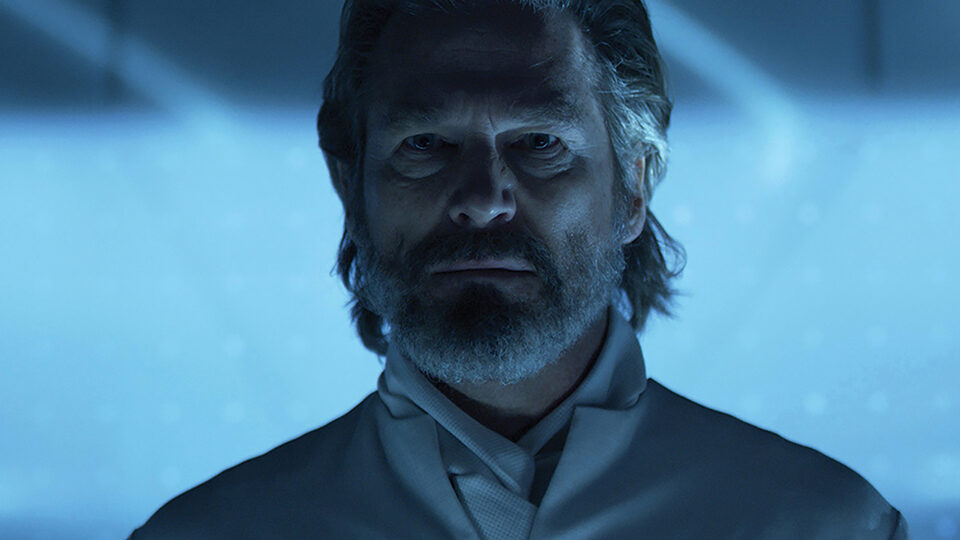By Daniel Witkin in the September-October 2019 Issue

Your Forever Person: Digital Actors
The ability to fabricate performances after death opens up a brave new world with evolving rules
In Ari Folman’s endearingly bonkers 2013 curio The Congress, Robin Wright (playing herself) signs over her publicity rights to an unscrupulous studio boss—and becomes legally obligated to languish in obscurity as her digital avatar achieves monumental fame. The full extent of that film’s dystopia is yet to materialize, but the technology that allows the studio to simulate Wright’s presence is more or less already here, and only getting more powerful. Even before the advent of CGI, studios have taken measures to construct performances in the absence of performers: there’s the considerable history of studios faking their way to a usable turn from an actor who had the temerity to die before wrapping, running from Robert Walker in My Son John (1952), to Brandon Lee in The Crow (1994), to 2016’s Star Wars installment Rogue One, which reanimated long-gone genre stalwart Peter Cushing using English actor Guy Henry and some facial-mapping wizardry. But as technology speeds closer and closer toward the perfect digital reproduction of human figures, even the fanciful prognostications of The Congress no longer seem inconceivable. Already, studios and actors alike are preparing for the potential economic and artistic disruptions of and implications for the right of publicity (i.e., to the use of one’s likeness, name, and persona).

From the September-October 2019 Issue
Also in this issue
Special effects companies already allow performers to make comprehensive scans of their bodies and faces, creating extensive corpuses of data that can help an actor play younger roles longer or license their appearance posthumously. Jeff Bridges for one has observed these developments over the years through his involvement in the Tron franchise, in whose most recent entry, Tron: Legacy (2010), he was “de-aged” (to use the latest parlance for such CGI-augmented cinematography) to portray a younger version of himself. “In Tron, my character gets sucked inside the computer, and when I did the second Tron that basically happened,” Bridges said when I spoke with him recently on the subject. “It was a matter of standing in front of a machine that runs scan lines up and down your whole body. And then for the face, they had me sit in front of a whole battery of cameras and lights . . . and I just ran through the gamut of expressions, and all of those were put into the computer and then manipulated by the CG artists.” Bridges speculated that “in the near future, you’ll be able to say, ‘Let’s get De Niro, get a little Al Pacino, get some Jackie Gleason in there, and just a touch of Bridges.’”
In light of this ability to contrive new performances more or less from scratch, lawyers and policy-makers have been working apace in an attempt to keep up. A key debate concerns whether there should be a postmortem right of publicity, which would allow performers to will their heirs the exclusive right to license their images as they please. The answer to this question varies greatly from state to state. For example, California allows for a descendible postmortem right while New York does not. The somewhat morbid implication is that whether one’s publicity rights are heritable can be contingent on whether one dies (or has one’s will probated) in Manhattan or Los Angeles, although legislation being proposed in New York would extend the postmortem right to that state as well. Diane Savino, the New York State senator sponsoring this bill, told me that some version of the legislation has been proposed in each of her 15 years in office. “Every year, it gets more difficult to wrap our heads around what they used to call the ‘dead celebrities bill,’” Savino said. “We’ve been trying to update it, and every time we think we’re close, we add a new wrinkle to it.”
At least on the grounds of heritability, the idea of a postmortem right seems to be an attractive one for stars and their advocates. “I haven’t given it much thought, but it sounds terrific,” Bridges said. “I mean, I’m thinking of my family, you know, if they can benefit financially from that. That would be OK.” But the lavish price point of digital scanning procedures, which can run upwards of a million bucks, means that studios tend to be the ones in control of this potentially invaluable data. Lucasfilm, for instance, collects scans of the stars of their new Star Wars films. In a conversation with tech website Inverse, VFX supervisor Ben Morris said, “We will always scan all the lead actors in the film. We don’t know if we’re going to need them. We don’t intentionally scan them as an archive process. It’s for reference later.”

Jeff Bridges in Tron: Legacy (Joseph Kosinski, 2010)
The involvement of clear corporate interests adds urgency to the legal issues, especially to the question of transferability—i.e., whether the right of publicity should be transferable from one party to another, which is an assumption intrinsic to a postmortem right. Notably, one of the most prominent early calls for a transferable right of publicity was penned in 1954 by one Melville B. Nimmer, an attorney who represented not actors but Paramount Studios, which sought a more reliable way of protecting its investments in talent after the collapse of the old studio star system. Jennifer E. Rothman, a professor at Loyola Law School in Los Angeles and the author of The Right of Publicity: Privacy Reimagined for a Public World, pointed to some examples that gestured in this direction. “If you look at some of the reality series TV contracts, particularly in the early ’00s, those contracts signed away these people’s rights of publicity in perpetuity. Some of them even restricted their ability to appear in public,” Rothman said. “So I think we’ll see recording contracts do that, but for a more limited period of time. I think it’s very chilling.”
The screen actors guild generally supports the conception of the right to publicity as transferable, but Jeffrey Bennett, Chief Deputy General Counsel and Executive Director of the union’s New York branch, stated that were such issues to arise, SAG would work to limit any potential harm. “I think that’s a scenario that’s more hypothetical than practical at this point, but we would obviously look to delve into the practice—if it became a practice—and develop reasonable limitations around it,” Bennett said. “For the living, you can’t even have a personal services contract beyond seven years, for goodness’ sake.”
Regardless of their particulars, the benefits of technological and legal changes alike are likely to fall in the hands of the powerful. It doesn’t seem accidental that Disney has taken the most prominent role in pushing the issue, from Cushing’s reappearance in that galaxy far, far away to the studio’s use of de-aging across the Marvel Cinematic Universe. If you’re going to spend billions of dollars on buying a franchise, it only makes sense to do everything in your power to push back its expiration date for as long as possible. But as Disney has emerged as the most successful exemplar of an industry-wide elevation of IP and quality control at the direct expense of the individual artistic personality, it’s hard not to be a bit wary of the routine appearance of convincing digital humanoids. If a mercenary corporate entity could replace inconveniently autonomous performers, writers, and directors with pliant and predictable algorithms, why wouldn’t they? As Robert De Niro—who joins other stars in Martin Scorsese’s The Irishman in undergoing the latest version of de-aging—once mused in an interview, in the future “they’ll do a likeness that you have to fight for the right to own.”
“Basically, you’re getting into the whole debate about artificial intelligence and how much of ourselves we’re going to surrender to it,” Bridges said. Indeed, it’s both troubling and reassuring to realize the degree to which these grand technological questions will be decided by petty, unmistakably human concerns. Significantly, in 2017, Disney and Lucasfilm released an unusual public statement to “assure” fans that they would not be digitally re-creating the recently deceased Carrie Fisher, which can be interpreted as an admission by the corporation of the present limitations of its own digital tools—both in terms of the state of the technology and how willing audiences are to buy into it. For the time being at least, there remain some individual human personalities to which even the most powerful of media companies must pay deference.
Daniel Witkin is a writer and filmmaker based in New York City. His work has been published in Reverse Shot, Film Comment, Cinema Scope, and elsewhere.







